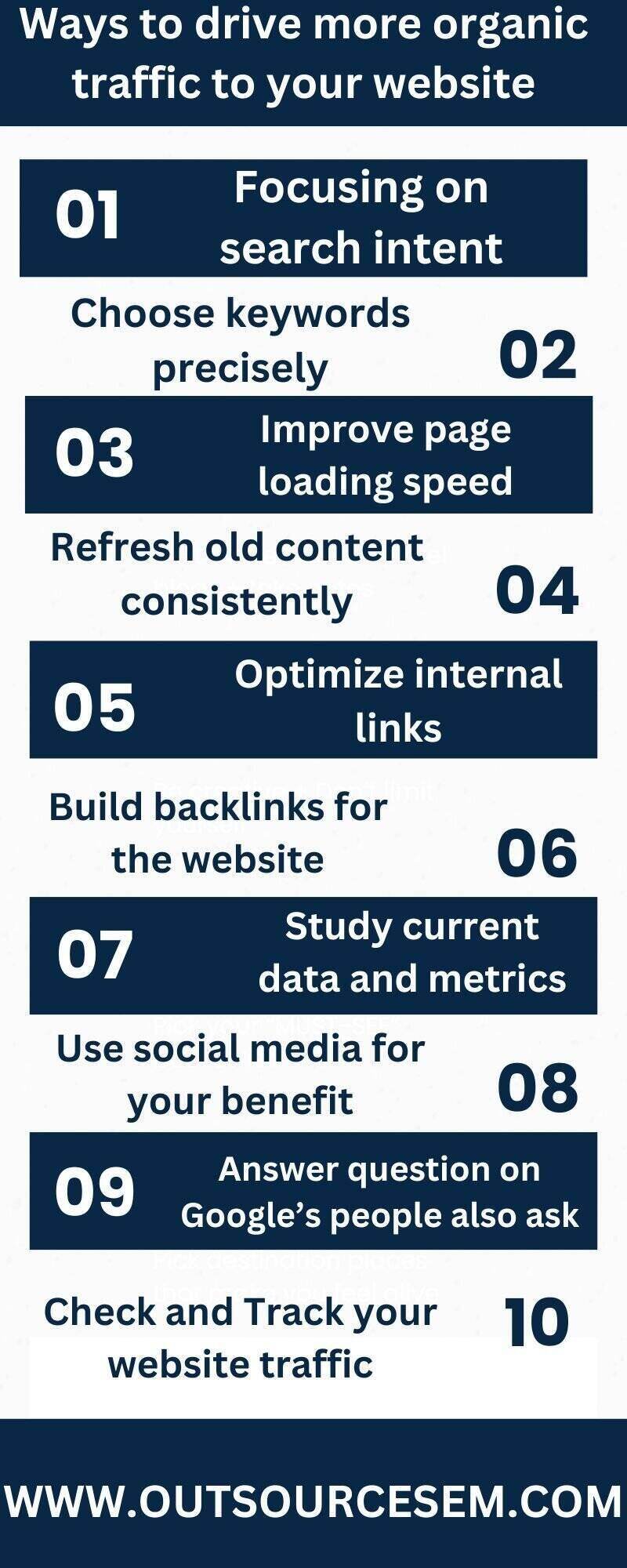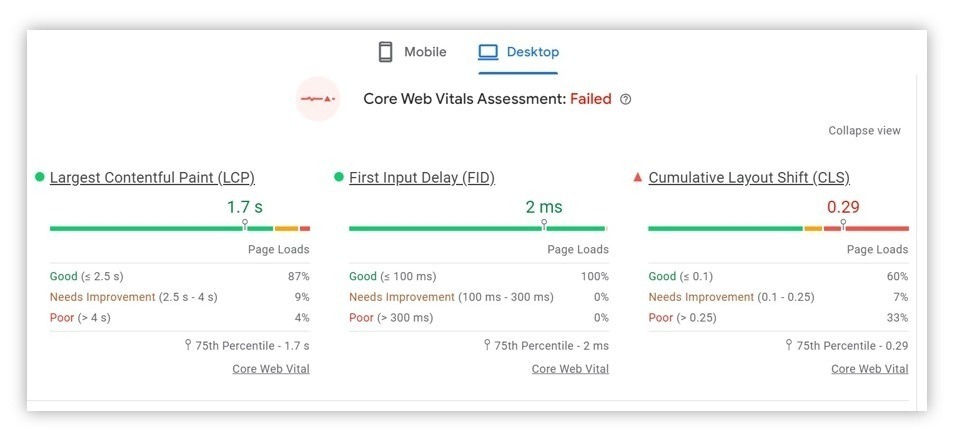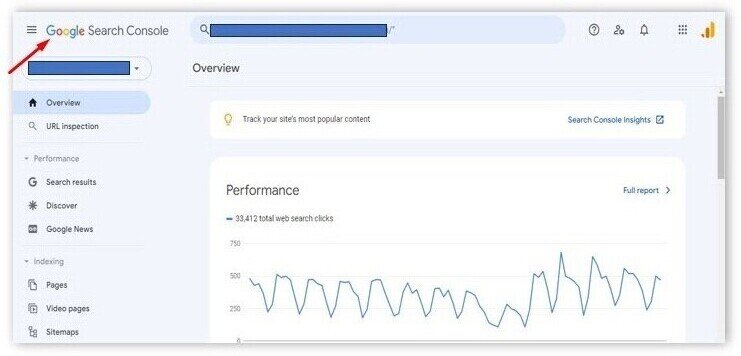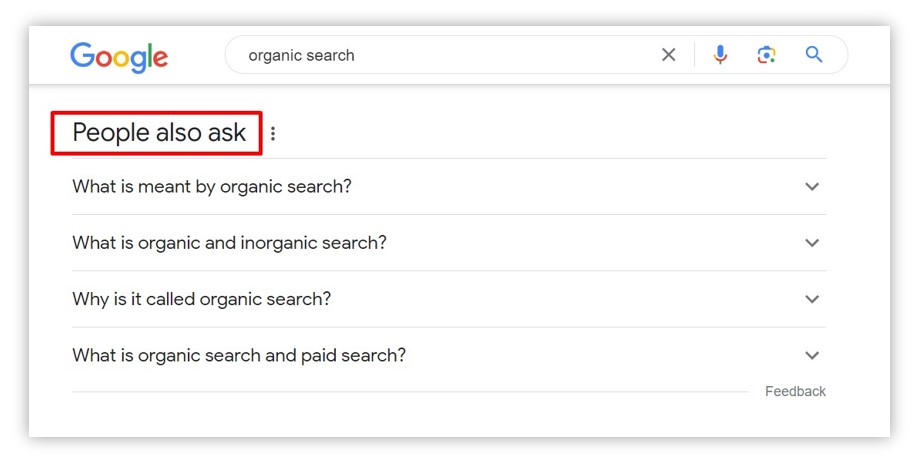In the digital marketing industry, acquiring high-quality website traffic is essential, differing significantly from traditional methods. The growth of social media platforms presents numerous opportunities for targeting users and increasing website visits. Whether through PPC ads, e-commerce endeavors, or email marketing campaigns, attracting relevant audiences is paramount for success. This blog dives into the significance of website traffic and offers actionable tips for its enhancement. By understanding the importance of driving relevant traffic to websites, marketers can optimize their strategies to achieve desired goals effectively. Through targeted efforts and utilizing various online channels, businesses can expand their reach and engagement, ultimately fostering growth and maximizing their online presence. Implementing these strategies can result in increased website traffic, improved brand visibility, and enhanced conversion rates, leading to overall business success in the digital marketing industry.
What does organic traffic mean?
Organic traffic simply refers to the visits a website receives from unpaid search results in search engines like Google, Bing, or Yahoo. Organic traffic is the antithesis of paid traffic, which means the visit generated by paid/sponsored ads.
So, the type of digital marketing that emphasises on enhancing organic traffic is known as search engine optimization (SEO). This is the process of boosting the quality of your website traffic, resulting in improved website visibility of the products or services you provide on search engines.
Why is more organic traffic necessary?
Every user who enters a query in a search engine has a unique purpose. Providing them with the answer or solution to their unique question can help you get new customers.
Organic traffic is one of the key components that increase website trust and tends to have better and more steady conversion rates in the long run. Also, it’s a fact that all of us tend to click on websites that rank at the top of Google organically.
Approaches you an use to drive more organic traffic to your website

1. Focusing on search intent of the user
Search intent or you can say user intent is the intention behind a user’s query on search engines. If the content you provide doesn’t fulfill the users’ intentions, it can be a possible reason for a user experience and it can drag your page down. Therefore, search intent should be one of your top priorities while updating old or creating new content.
So, before creating or updating a content, conduct thorough research while keeping your audience at the center of your research. Who is your audience? What does your audience want? Put yourself in their place and think like them. Ensure you understand the intent and direction of your piece before creating content. Keyword research is one of the best and proven way to find out users intention. You can initiate your keyword research by listing down all the important and relevant things you know about your business. Ahrefs tool, SEMrush tool, and Moz tool are some of the keyword research tools that you can use. These tools, can help you form a content marketing plan and produce more relevant content based on your audience.
.jpg)
2. Choose keywords precisely
Keyword targeting is a fundamental method for driving traffic to your site. One method you would love to use is instead of utilizing keywords with high search volume, you should go for the keywords that are specifically about products or services you provide. If you use keywords that are specific to your business, it'll be just matter of time when search engines will choose your content as a go to destination for users who are interested in your type of business. In result, it will enhance your content in search engine result pages(SERPs) and can help you gain potential customers.
The keywords you target can be both short or long-tail, and sometimes, you can also combine both with a strong correlation. Short-tail keywords, are also head terms, which denote that search queries are covering broad topics with considerable amount of search volumes.
On the other hand, a long tail keyword generally contains of three to five and sometimes more than five, it can give you more specificity but a quite low amount of search volume. It is a great way of attracting more traffic as long tail keywords are generally more specific, which are aligned with the content, which can help you engage new customers. Additionally, customers can access content that is compatible to their objective, which can give you higher satisfaction rates.
One remarkable benefit which comes with long-tail keywords is their resemblance to the language used in daily life. This factor is quite advantageous in the context of growing importance of voice search. The compatibility with natural language enhances the efficiency of long-tail keywords, increasing their capability of handling voice search queries.
Targeting keywords that generate high traffic but are not related to your business will do nothing but waste your time and resources. It will endanger your traffic which will put your conversions at risk. Thus, it is always recommended to conduct a detailed research before deciding on which keywords to target.
.jpg)
3. Improve page loading speed.
A large number of users abandon a website that takes more than a few seconds to load. A slow-loading website can cause a lot of problems as it increases bounce rates, and search engines also give less preference to sites with a slow loading speed. The site's low speed directly impacts the ranking and traffic of your website, i.e., the lower the website ranking, the less visibility you will get. Improving your website can directly have a positive impact on your website ranking and also provide visitors to the website with a great user experience.
To increase your site loading time, there are a number of steps that can be taken, such as optimizing the code on your website, reducing the redirects, using the CDN ( content distribution network ) to distribute a load of delivering the web content, and optimizing the images and other visuals present in your web pages. One way to measure the site's speed is by using a metric known as the largest contentful paint, which shows the loading time taken by the largest image or text block present on your website from the time it starts loading. To provide the users with a good experience, the ideal LCP of a site should be around 2.5 seconds. So, it would be best to start optimizing your site speed by evaluating it first and improving it accordingly.

4. Refresh old content consistently
Suppose you are researching to learn about some topic, and you come across two posts, one published four years ago and the other published in the latest year or month. Which one would you prefer to read? Most people choose updated and new content rather than older content. Search engines also prefer websites with updated and fresh content. Updated and quality content on your website helps attract more traffic to your website, leads to an increase in social shares, and enhances user experience. There are some ways to refurbish your content:
a. Utilizing tools like Google Analytics and Google Search Console can help analyze and identify the blog posts that are worth updating. It helps you determine the content that is outdated but has the potential to rank in search engine results.

b. When it comes to updating your content, always ensure that content is helpful and user-friendly, unique, fresh, and written comprehensively. Make sure to update it.
Some of the things you might want to update are:
i. Statistics
ii. Irrelevant images
iii. Broken links
iv. Writing
It is also important to optimize your page in a way that mobile users can also have a seamless experience.
5. Optimize internal links
An internal link is any hyperlink that helps users navigate the website's internal pages. Optimizing the internal links is highly important for your website SEO and helps search engines understand the context of your web pages and how they are related to each other. Internal links also help users to navigate to the content that they find relevant. Internal links help distribute the value of your backlinks on your web pages. If your site has enough content, then you can easily connect your website's internal pages by giving links to content related to each other. Strategically optimizing the internal links helps engage the visitors to your website for a very long time. If your website contains internal and external links to a certain extent, it sends a good signal to search engines and improves your website's search engine ranking. Using keyword-rich anchor text, strategically providing links to important pages, and utilizing advanced tools such as Google Search Console to audit internal links on your website are some of the important steps you can take in the process of optimizing the internal links and improving the website's search ranking.
6. Build backlinks for website
Backlinks which are also called inbound links are links created when one website links to another website.A profile of the backlink depicts how good is your website with the users.
It is one of the most important factors for Google’s algorithm and is called as off-page SEO.
Your page will get more visibility when you add inbound links to your content
Adding backlinks to your site definitely takes some time and effort. However, you can get started by:
a. Creating list posts: How to post, infographics, and posts with embedded videos and multimedia. Various types of these content tend to get more backlinks than standard posts.
b. Writing long-form guide posts
c. Reaching out to influencers in your business making them know about articles published on your site that they are interested in linking to.
7. Study current data and metrics
If you want your organic traffic to grow, analyze your current data. By monitoring your current data, you will be able to get insights in few minutes. The best part is that you’ll be able to cut down on the time you spend researching ideas by taking actions based on data. With the help of data analytics you can understand users behaviour on your website.
that is where they come from, and what keywords they’ve searched for - you get the idea. This helps to modify your content for boosting organic traffic.There are various tools like GA and GSC which help you to analyze data. Like with with GA you can find out how engaging your pages are and how much your traffic is converting. To increase organic traffic you must provide users with what they are looking for based on qualitative and quantitative research.
8. Use social media for your benefit
A successful digital marketing strategy does not necessarily eliminate the utilization of social media. While social media does not directly influence your website ranking, it still add a lot value to your business.
Depending on the type of business you’re operating, focusing on one or two platforms is crucial to easily monitor and handle your projects. It is essential to choose the right social media platforms depending upon the type of customers you are targeting such as if you are a B2B business then platforms like Linkedin is better to begin with and if are a B2C business and then Facebook, Instagram are some popular social media platforms you should focus on. Also to boost the shareability of your content you can include social share buttons to your site and emails.
Answer question on Google’s People also ask
Google’s People also ask for a snippet that presents users. For example, if you put question like how to increase organic traffic to a website,people also ask a feature on Google that provides further questions that other users have posted which are related to your initial query. These are relevant questions that helps users in having more insights or answers apart from their original search.
The importance of people also ask feature lies in its ability to encourage users towards optional answers to their questions. This is helpful in scenarios where the accurate phrasing of a query is uncertain, and the primary reaction may not be the best one. When users question, users are presented with a range of similar questions and corresponding answers. People also ask that the section is an added advantage for the websites that are presented in it as it boosts clicks and traffic. Moreover, Google’s feature aids marketers in identifying more effective keywords for their search engine optimization endeavours.

9. Check and track your website traffic
Before you start monitoring your website traffic, identify the goal of your website. Certainly, the final goal is to increase revenue, but there are other things you might want to track such as contact from submissions, email subscriptions, content downloads, etc.
If the objective of your website is to increase sales your primary attention should be on conversion rate. An enhanced conversion rate signifies that your website is performing well. When you have a pre-defined goal, the need of the hour is to check website analytics, which states that-how your website is performing, from where is your traffic coming from, how visitors engage with your site, how well your digital strategies are functioning.
Conclusion
Driving organic traffic is foundational to digital marketing success. By aligning content with search intent, judiciously selecting keywords, enhancing page speed, and refreshing old content, you can improve your website’s visibility and user experience. Furthermore, optimizing internal links, building a diverse backlink profile, and leveraging social media platforms amplify your online presence and audience engagement. Tracking website traffic and setting clear conversion goals are essential steps in assessing performance and refining strategies. Understanding user engagement, traffic sources, and conversion metrics gives detail insights of the digital marketing initiatives.
In essence, organic traffic serves as a reliable indicator of your website’s relevance and authority in the online landscape. By prioritizing user satisfaction, optimizing content for search engines, and fostering meaningful interactions across digital platforms, you can elevate traffic source and nurture lasting relationships with your audience. This integrated approach, rooted in quality content, technical excellence, and audience-centric, forms the cornerstone of successful organic traffic generation, driving long-term growth and profitability for your business.
To increase the website traffic and enhance the performance of it on SERPs it is also important to ensure your website is properly SEO optimized and content available on it is of high quality so that search engines can crawl and index it more better. People often lack the proper skills to implement an effective SEO on their website as SEO requires proper skills and deep research which is better if done by professionals. If you are looking for experts who can help in improving your website rank and boost organic traffic then OutsourceSEM experts can help you. We provide top-notch digital marketing services such as PPC services, SEO services, SEO analytics, keyword research, competitor analysis, SEO detox and penalty removal, link building and SEO plan and strategy across the world. Our best internet marketing agency also helps different businesses and industries such as flooring, painting, HVAC and much more to achieve their desired marketing goals with our best SEO agency. We have an efficient team skilled in fulfilling all your digital marketing tasks for your full concentration on your brand. You can also avail of painting SEO services, plumbing SEO services, construction SEO services, flooring SEO services, roofing SEO services, etc. to increase website organic traffic.
References
- What Is organic traffic (and how to increase it)
- 7 Fast ways to increase organic traffic
